Related Research Articles
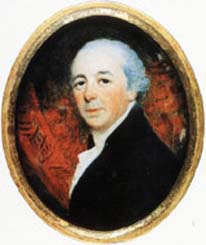
John Nash was one of the foremost British architects of the Regency and Georgian eras, during which he was responsible for the design, in the neoclassical and picturesque styles, of many important areas of London. His designs were financed by the Prince Regent, and by the era's most successful property developer, James Burton, with whose son Decimus Burton he collaborated extensively.

Augustus Welby Northmore Pugin was an English architect, designer, artist and critic who is principally remembered for his pioneering role in the Gothic Revival style of architecture. His work culminated in designing the interior of the Palace of Westminster in Westminster, London, England, and its iconic clock tower, later renamed the Elizabeth Tower, which houses the bell known as Big Ben. Pugin designed many churches in England, and some in Ireland and Australia. He was the son of Auguste Pugin, and the father of Edward Welby Pugin and Peter Paul Pugin, who continued his architectural firm as Pugin & Pugin. He also created Alton Castle in Alton, Staffordshire.

The Jacobethan or Jacobean Revival architectural style is the mixed national Renaissance revival style that was made popular in England from the late 1820s, which derived most of its inspiration and its repertory from the English Renaissance (1550–1625), with elements of Elizabethan and Jacobean.
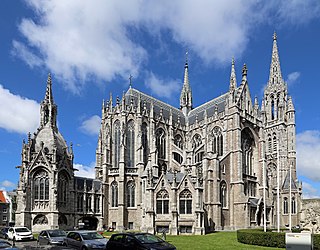
Gothic Revival is an architectural movement that began in the late 1740s in England. Its momentum grew in the early 19th century, when increasingly serious and learned admirers of neo-Gothic styles sought to revive medieval Gothic architecture, in contrast to the neoclassical styles prevalent at the time. Gothic Revival draws features from the original Gothic style, including decorative patterns, finials, lancet windows, hood moulds and label stops. By the mid-19th century, it was established as the preeminent architectural style in the Western world.

Decimus Burton was one of the foremost English architects and urban designers of the 19th century. He was the foremost Victorian architect in the Roman revival, Greek revival, Georgian neoclassical and Regency styles. He was accomplished also in the cottage orné, picturesque and neogothic styles. He was a founding fellow and, later, vice-president, of the Royal Institute of British Architects, and architect to the Royal Botanic Society from 1840 and an early member of the Athenaeum Club, London, whose club premises he designed and which the company of father, James Burton, the pre-eminent property developer of Georgian London, built. Modern architectural historians Guy Williams (1990) and Dana Arnold (2004) contend that Burton's contribution to architecture has been underestimated: as a consequence of the misattribution to John Nash of many of his works; of his vituperation by his neo-gothic rival, Augustus Pugin; and of the consequent retention of his archives by his family.

Victorian architecture is a series of architectural revival styles in the mid-to-late 19th century. Victorian refers to the reign of Queen Victoria (1837–1901), called the Victorian era, during which period the styles known as Victorian were used in construction. However, many elements of what is typically termed "Victorian" architecture did not become popular until later in Victoria's reign, roughly from 1850 or 1850. The styles often included interpretations and eclectic revivals of historic styles. The name represents the British and French custom of naming architectural styles for a reigning monarch. Within this naming and classification scheme, it followed Georgian architecture and later Regency architecture, and was succeeded by Edwardian architecture.

The architecture of England is the architecture of modern England and in the historic Kingdom of England. It often includes buildings created under English influence or by English architects in other parts of the world, particularly in the English and later British colonies and Empire, which developed into the Commonwealth of Nations.
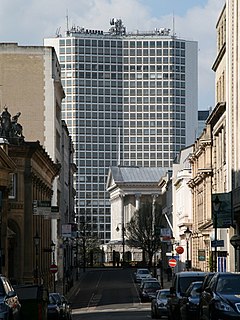
Although Birmingham in England has existed as a settlement for over a thousand years, today's city is overwhelmingly a product of the 18th, 19th, and 20th centuries, with little surviving from its early history. As it has expanded, it has acquired a variety of architectural styles. Buildings of most modern architectural styles in the United Kingdom are located in Birmingham. In recent years, Birmingham was one of the first cities to exhibit the blobitecture style with the construction of the Selfridges store at the Bullring Shopping Centre.
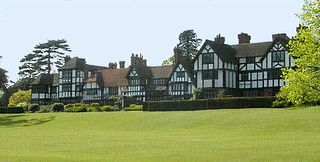
Tudor Revival architecture first manifested itself in domestic architecture in the United Kingdom in the latter half of the 19th century. Based on revival of aspects that were perceived as Tudor architecture, in reality it usually took the style of English vernacular architecture of the Middle Ages that had survived into the Tudor period. The style later became an influence elsewhere, especially the British colonies. For example, in New Zealand, the architect Francis Petre adapted the style for the local climate. In Singapore, then a British colony, architects such as R. A. J. Bidwell pioneered what became known as the Black and White House. The earliest examples of the style originate with the works of such eminent architects as Norman Shaw and George Devey, in what at the time was thought Neo-Tudor design.

Charles Francis Annesley Voysey was an English architect and furniture and textile designer. Voysey's early work was as a designer of wallpapers, fabrics and furnishings in a simple Arts and Crafts style, but he is renowned as the architect of several country houses.
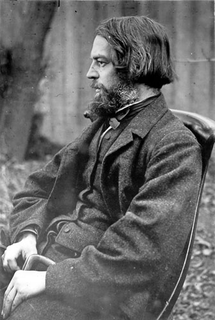
Benjamin Woolfield Mountfort was an English emigrant to New Zealand, where he became one of that country's most prominent 19th-century architects. He was instrumental in shaping the city of Christchurch's unique architectural identity and culture, and was appointed the first official Provincial Architect of the developing province of Canterbury. Heavily influenced by the Anglo-Catholic philosophy behind early Victorian architecture, he is credited with importing the Gothic revival style to New Zealand. His Gothic designs constructed in both wood and stone in the province are considered unique to New Zealand. Today, he is considered the founding architect of the province of Canterbury.
The Abney Park Temple Lodges are gatehouses to Abney Park Cemetery designed by William Hosking, to Abney Park in the London Borough of Hackney. The lodges are composed mainly of stone building materials and designed in an Egyptian Revival style, which was unusual for the time period of which the lodges were conceptualized. Augustis Pugin Jr. was famously against the non-European design of the lodges despite public fascination of Egyptology at the time.
Samuel Whitfield Daukes (1811–1880) was an English architect, based in Gloucester and London.

Jean-Baptiste Bethune was a Belgian architect, artisan and designer who played a pivotal role in the Belgian and Catholic Gothic Revival movement. He was called by some the "Pugin of Belgium", with reference to influence on Bethune of the English Gothic Revival architect and designer, Augustus Pugin.

Dissenting Gothic is an architectural style associated with English Dissenters, that is, Protestants not affiliated with the Church of England. It is a distinctive style in its own right within Gothic Revival architecture that emerged primarily in Britain, its colonies and North America, during the nineteenth century.
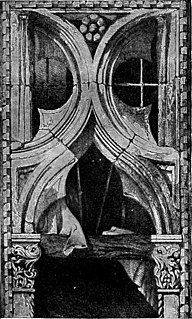
The Seven Lamps of Architecture is an extended essay, first published in May 1849 and written by the English art critic and theorist John Ruskin. The 'lamps' of the title are Ruskin's principles of architecture, which he later enlarged upon in the three-volume The Stones of Venice. To an extent, they codified some of the contemporary thinking behind the Gothic Revival. At the time of its publication, A. W. N. Pugin and others had already advanced the ideas of the Revival and it was well under way in practice. Ruskin offered little new to the debate, but the book helped to capture and summarise the thoughts of the movement. The Seven Lamps also proved a great popular success, and received the approval of the ecclesiologists typified by the Cambridge Camden Society, who criticised in their publication The Ecclesiologist lapses committed by modern architects in ecclesiastical commissions.
John Norton was an English architect who designed country houses, churches and a number of commercial buildings.
William Henry Leeds was an English architectural critic and journalist.
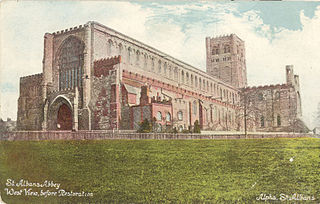
The Victorian restoration was the widespread and extensive refurbishment and rebuilding of Church of England churches and cathedrals that took place in England and Wales during the 19th-century reign of Queen Victoria. It was not the same process as is understood today by the term building restoration.

The Bishop's House in Birmingham, England was designed by Augustus Pugin as the residence of Thomas Walsh, the first Roman Catholic Bishop of Birmingham. It was situated opposite St Chad's Cathedral, on the corner of Bath Street and Weaman Street in Birmingham City Centre.
References
- ↑ Neale, John Mason and Webb, Benjamin (1843). The symbolism of churches and church ornaments, p. xix. T.W. Green, Leeds.
- ↑ Pugin, A.W.N. (1843). An Apology for the Revival of Christian Architecture, p. 20, John Weale, London.
- ↑ Pugin, A.W.N. (1841). The True Principles of Pointed or Christian Architecture, p. 1. John Weale, London.
- ↑ Brooks, Chris (2000). Gothic Revival, p. 251. Phaidon, London. ISBN 9780714834801
- ↑ Brooks, Chris (1984). Signs for the Times, p. 159. Routledge, London. ISBN 9781138641112
- ↑ Brooks, Chris (2000). Gothic Revival, p. 251. Phaidon, London. ISBN 9780714834801
- ↑ Brooks, Chris (1984). Signs for the Times, chapter 12. Routledge, London. ISBN 9781138641112
- ↑ Brooks, Chris (2000). Gothic Revival, p. 305. Phaidon, London. ISBN 9780714834801
- ↑ Brooks, Chris (1984). Signs for the Times, p. 157. Routledge, London. ISBN 9781138641112
- ↑ Voysey, C.F.A. (1915). Individuality, p. 11. Chapman & Hall, London)
- ↑ Aslet, Clive (2011). The Arts and Crafts Country House, p. 128. Aurum, London. ISBN 978-1845136802